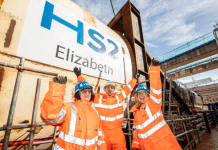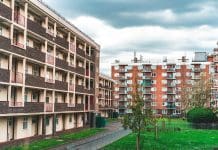The Covid-19 crisis has revealed flaws in the way in which we design, manage and operate buildings, according to the report published by the Royal Academy of Engineering and its partners in the National Engineering Policy Centre (NEPC)
In a report, commissioned by the government chief scientific adviser, Sir Patrick Vallance, leading engineers say good ventilation inside buildings and on public transport is essential to reducing the risk of Covid-19 and other infections.
Clearly identifiable measures that can be implemented at a moderate cost will help to ensure that adequate ventilation is prioritised alongside more visible measures such as surface cleaning and distancing.
The report also warns that there is an urgent need to plug skills and knowledge gaps and put in place the training, re-skilling and recruitment needed to fill them.
Even in sectors such as hospitals, which have a clear regulatory framework and an explicit remit for managing the health and safety of vulnerable populations, levels of skill and competence vary.
In a series of evidentiary hearings, the Royal Academy of Engineering uncovered differing levels of organisational maturity across operators and sectors, and variation in the ability and motivation of owners to understand, manage and govern issues of infection control.
Efforts to increase resilience to infection must also work alongside the delivery of significant carbon emission savings from our buildings. These two ambitions should be driven forward in tandem and efforts across government need to be fully coordinated.
Key recommendations:
- Government should urgently map the knowledge and skills requirements across the building industry, general businesses, and the engineering professions and put in place plans to address the skills gaps identified.
- Government should undertake a rapid review of the capacity and capability requirements among regulators (including local authorities) to support and enforce standards in maintaining buildings for public health.
- Working with the National Core Studies Programme, UKRI and the National Academies, government should put in place an action plan to address key research gaps on an accelerated basis.
- Research and demonstration projects should be commissioned to fill key knowledge gaps such as the acceptable minimum standards for ventilation to manage infection risk and to underwrite regulation and enforcement.
- Action to meet net-zero must be developed in a way which is consistent with priorities around indoor air quality and making buildings resilient to infection.
Buildings make an ‘enormous difference to people’s health’
Professor Peter Guthrie OBE FREng, vice president of the Royal Academy of Engineering and chair of the NEPC infection resilient environments working group, said: “We have often neglected this in the past, which is bad news in a pandemic, because they are one of the most significant levers that we have to control infection.
“We must take action now to make sure that good practice in ventilation is widely understood and applied across workplaces and public buildings.
“Longer term, this is a real opportunity to transform the way we design and manage our buildings to create good, healthy and sustainable environments for those who use them.
“We must also integrate this with thinking on infection control into our approach to net-zero, to prevent inadvertently hard-wiring a susceptibility to infection and other health risks into our building stock and management practices.”

















